Détail de l'auteur
Auteur G. Chinnici |
Documents disponibles écrits par cet auteur (11)
 Ajouter le résultat dans votre panier Affiner la recherche
Ajouter le résultat dans votre panier Affiner la recherche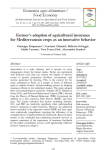
Article
G. Timpanaro ; G. Chinnici ; R. Selvaggi ; G. Cascone ; V.T. Foti ; A. Scuderi |Agriculture is a risky industry and is present in every management choice the farmer makes. Farms can experiment with different tools that can contain the impact of adverse events to protect production facilities, investments, and income generat[...]
Article
M. Hamam ; D. Spina ; R. Selvaggi ; G. Vindigni ; G. Pappalardo ; M. D'Amico ; G. Chinnici |Historically, both governmental and private sectors have significantly underinvested in the agriculture industry. Increasing agricultural and food system investments is necessary to enhance food security and nutrition, reduce poverty, and adapt[...]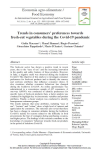
Article
G. Maesano ; M. Hamam ; B. Pecorino ; G. Pappalardo ; M. D'Amico ; G. Chinnici |The fresh-cut sector has shown a positive trend in recent years, due to the “ease of use” and the increasing innovation in the quality and safety features of these products. However, in Italy, a negative trend was observed during the lockdown Co[...]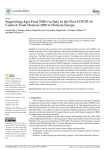
Article
Supporting agri-food SMEs in Italy in the post-COVID-19 context: from Horizon 2020 to Horizon Europe
C. Zarbà ; S. Bracco ; B. Pecorino ; G. Pappalardo ; G. Chinnici ; M. D'Amico |In recent decades, European policy has targeted specific measures towards SMEs. The recently concluded Horizon 2020 Programme, under the Europe 2020 Strategy, has provided economic support to stimulate competitiveness and boost the economy of me[...]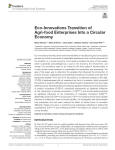
Article
M. Hamam ; M. D'Amico ; C. Zarbà ; G. Chinnici ; J. Toth |Eco-innovations that reduce the environmental effect of manufacturing and consumption are seen as critical components of sustainable development and a critical component of the transition to a circular economy. Food systems address the issue of [...]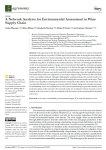
Article
G. Maesano ; M. Milani ; E. Nicolosi ; M. D'Amico ; G. Chinnici |In the agri-food sector, the Life Cycle Assessment method (LCA) is used to evaluate the environmental impact of a product. Within agri-food products, wine is among the most analysed products, not only for its economic importance but also for the[...]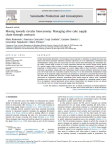
Article
M. Raimondo ; F. Caracciolo ; L. Cembalo ; G. Chinnici ; G. Pappalardo ; M. D'Amico |Circular bioeconomy represents a recent political vision expected to contribute in tackling the main challenges faced when sustainable industrial transition trajectories are to be implemented. Coordination and interdependence among actors are cr[...]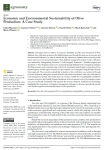
Article
G. Maesano ; G. Chinnici ; G. Falcone ; C. Bellia ; M. Raimondo ; M. D'Amico |This paper aims to achieve an economic feasibility and life cycle assessment of three different olive cultivation systems in the Mediterranean area through the joint use of economic and environmental indicators, in order to identify the key elem[...]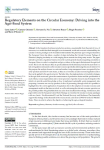
Article
C. Zarbà ; G. Chinnici ; G. La Via ; S. Bracco ; B. Pecorino ; M. D'Amico |In the transition from linear production systems, unsustainable from the point of view of resources, to a model that finds strength in environmental, social and economic sustainability, the circular economy paradigm is the foundation that facili[...]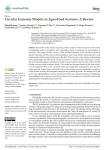
Article
M. Hamam ; G. Chinnici ; G. Di Vita ; G. Pappalardo ; B. Pecorino ; G. Maesano ; M. D'Amico |Around the world, interest is growing in the circular economy in response to the current unsustainable model of production and consumption based on increased use and depletion of resources. This paper provides a review of the academic literature[...]
Article
M. D'Amico ; A. Coppola ; G. Chinnici ; G. Di Vita ; G. Pappalardo |La reconnaissance des systèmes agricoles et territoriaux est indispensable à la création de programmes de développement ruraux, en particulier à un moment où la nouvelle Politique Agricole Commune est en train d’être redéfinie. La recherche actu[...]








